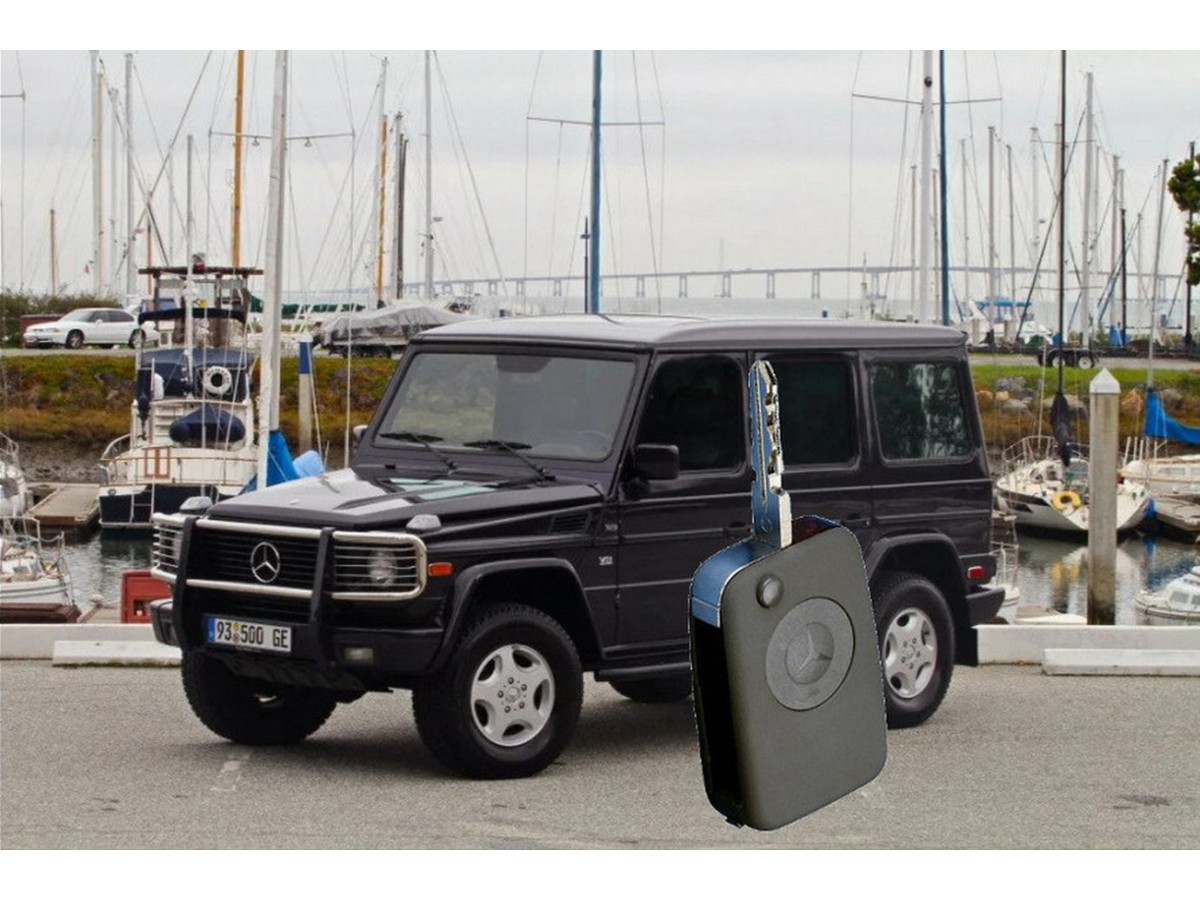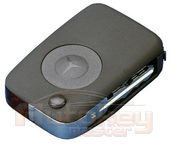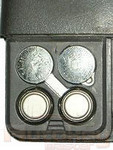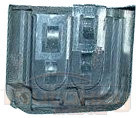0 ₽
CheckoutMercedes FBS1

Mercedes FBS1 Access Authorization System
From that moment on, the German car manufacturer Mercedes confrontation occurred on the improvement of this systems.
Mercedes FBS1 Access Authorization System
The initial version of the system was quite simple. It had elements such as:
-
-
the cylinders of the door locks and the boot lid lock are secured against turning;
-
the ignition lock cylinder is protected against twisting and drilling;
-
interrupt control starter in the present case.
-
In appearance, these cars did not differ, they had an identical mechanical key to open the door and turn on the ignition. The most important link in this system was the limit switches in the door locks. When the doors were closed, that is, they were armed, they blocked the starter activation circuit using the K38 relay. Unlocking such a circuit could only be carried out by opening a door or trunk lid before closing another switch.
The implementation of the system was carried out on 01/1994 (although, from the beginning of production, the W140 bodies were equipped with door lock cylinders protected from power rotation) on models:
-
W124 (starter interlock from 03/94, protection of door locks and ignition lock cylinders - not installed until the end of production);
-
W202 (starter lock, protection of door locks and ignition lock cylinders from 01/94);
-
W140 (starter blocking from 01/94, protection of door lock cylinders - initially, protection of the ignition lock cylinder - from body number A130213);
-
W129 (starter blocking, protection of door lock cylinders from 01/94, ignition lock cylinder - from body number A082352);
-
W463 (starter interlock from 03/94).
The processes of closing and opening locks, blocking the starter were the functions of the pneumatic central locking pump PSE, according to the state of the switches in the locks of the doors and trunk lid, PSE closed and opened the car locks, while sending a control command to the starter interrupt relay K38.
If any of the links in this chain in the protection system leaves the usual work, it is necessary to order parts in advance.
Mercedes FBS1a Access Authorization System
This system is one of the varieties of the system that was discussed above. It existed simultaneously with FBS1 and was an additional system to it. Its main difference is the infrared data transmission channel. If the car had such a function, it came with a key fob with a flip blade and one button. If you press this button (despite the fact that the doors are initially closed), the key fob transmitted an infrared signal through the receivers built into the door handles (A26 / 1) or in the trunk lid (A26 / 3) to the IFZ unit, this unit recognized his "key and sent the command to the pneumatic pump of the central locking PSE. The other functions are the same as in FBS1. The peculiarity of this system: in the case of locking the locks through the infrared channel, the permission to operate the starter did not appear when the car was opened with a mechanical key until the key lock was removed through the infrared channel.
On such models as the W124 and 463 with the FBS1a system, additional blocking functions were installed:
-
locking the automatic transmission selector with a cable connected to the ignition lock (to move the automatic transmission selector from the "parking" position, it was necessary to turn the key in the ignition lock);
-
in trim levels with a gasoline engine and a manual transmission, ignition and fuel pump control was interrupted;
-
for diesel engine and manual transmission trim levels, electric valves, Y9 and Y9 / 1, were installed, which blocked the fuel supply and the engine stop solenoid;
-
these functions were controlled by the IFZ module according to the commands of the infrared key.
Synchronization of IR keys of the FBS1a system:
Before synchronization, it is advisable to check the functionality of the keys:
-
check the operation of the key fob by long pressing the button - the red LED sould light up;
-
check the functionality of the infrared element by pointing it at the camera of the mobile phone and pressing the button. In the camera, you will see the infrared LED blinking;
-
if the tests are successful, then go to syncronization;
Keys that have been issued up to September 1993, in appearance rather cumbersome and had 4 batteries.



If such a key was in a discharged state for a long time or the batteries were replaced for more than 60 seconds, it might need synchronization. To do this, you need to carry out the following steps.
-
Aim the emitter of the key at the receiver of the infrared signal;
-
Press and release the key button;
-
Close or open the driver's door lock with a metal key within 30 seconds.
Flip keys, which began to be produced in October of the same year, became quite miniature in size, the number of batteries was reduced to 2. They may also need to be synchronized if batteries have been discharged for a long time and you replace the batteries more than one minute.
-
Aim the emitter of the key at the receiver of the infrared signal;
-
Press and release the button on the key;
-
Turn on the ignition within 30 seconds.
